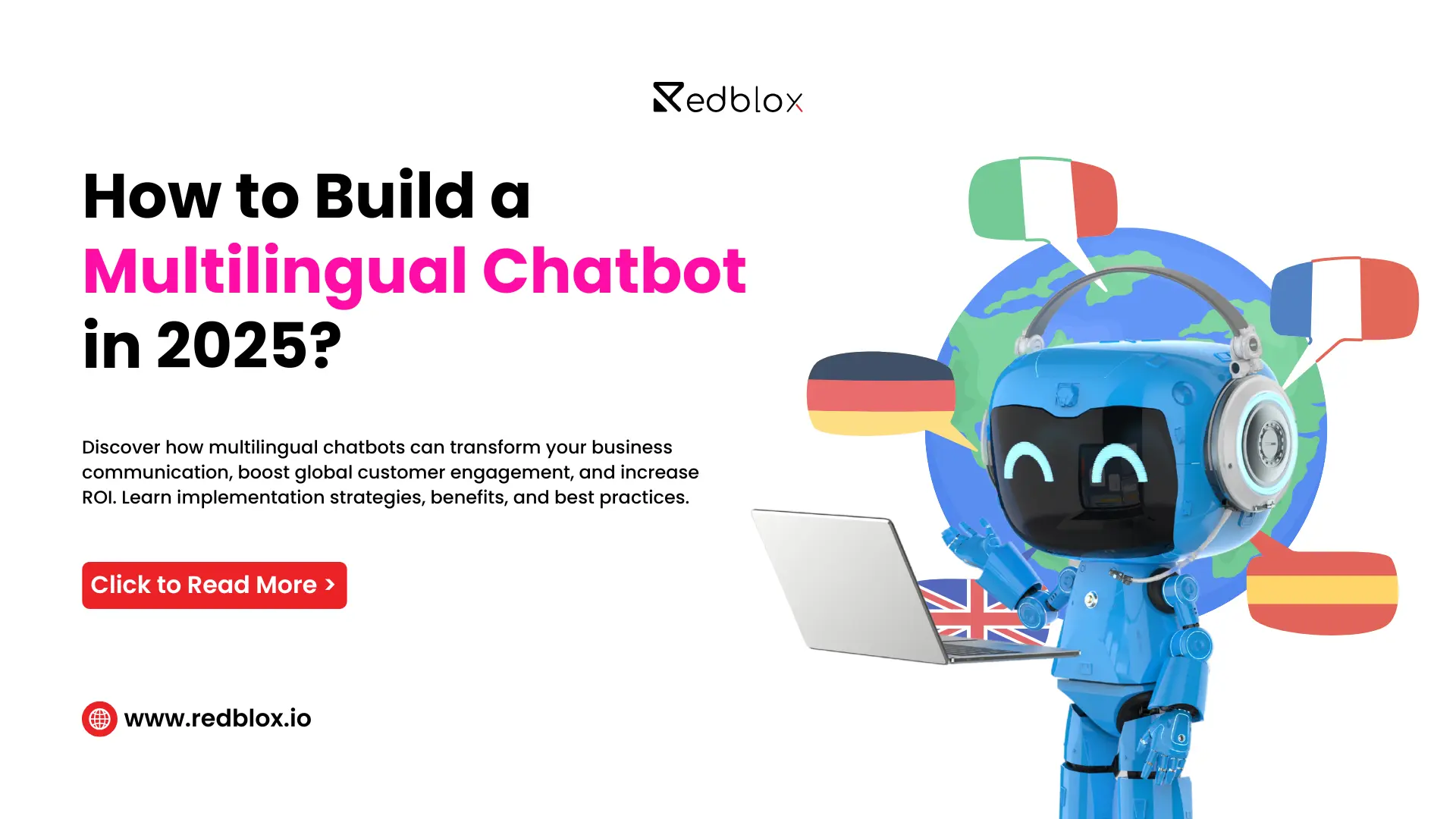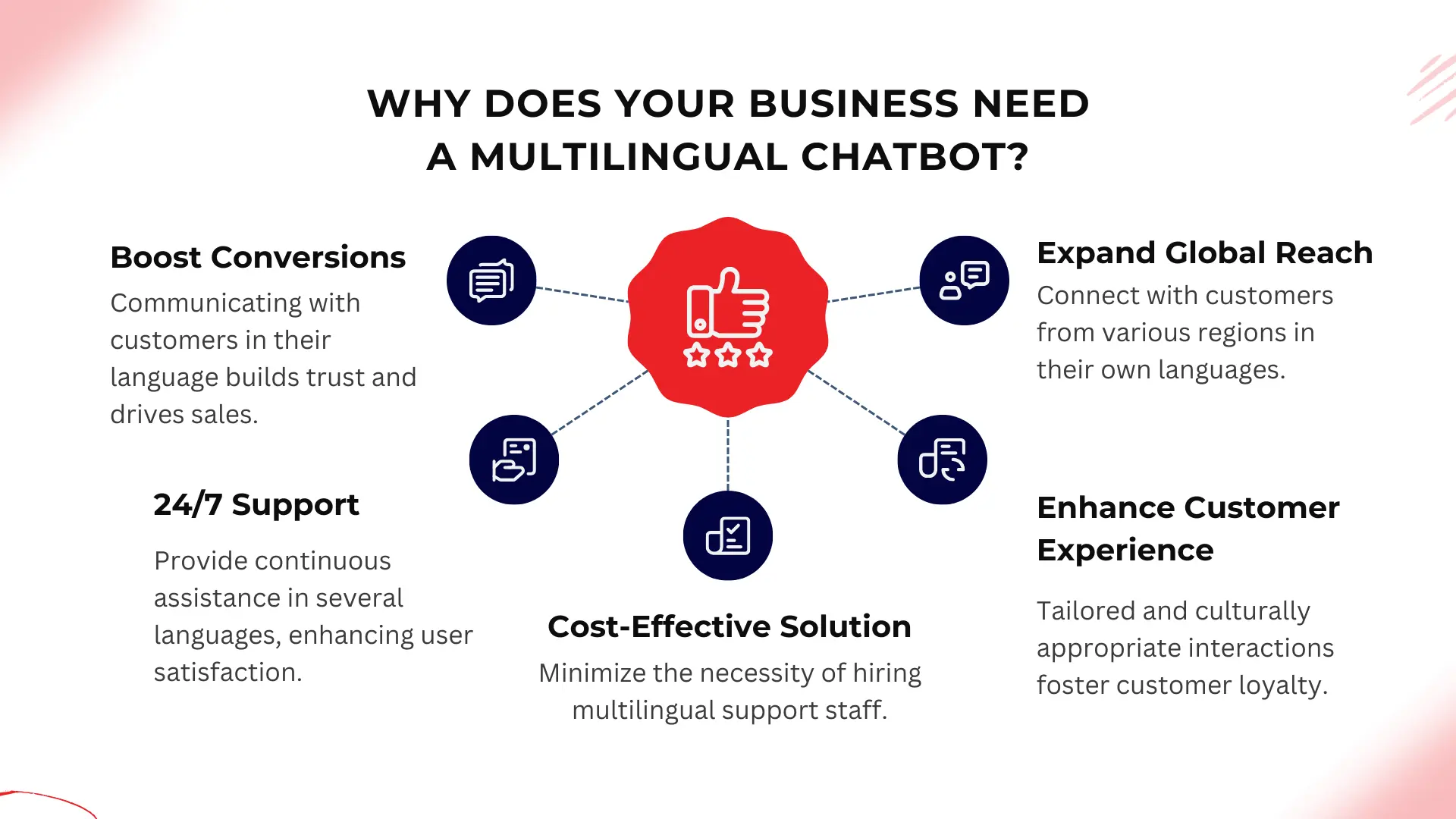How to Build a Multilingual Chatbot in 2025

How to Build a Multilingual Chatbot in 2025?
The swift advancement of artificial intelligence (AI) has changed the way customers interact with businesses. By 2025, companies will need to serve a global audience, making multilingual chatbots essential for overcoming language barriers and facilitating smooth communication. These sophisticated bots can engage in various languages, allowing businesses to connect with a wide range of audiences with ease.
What is a Multilingual Chatbot?
A multilingual chatbot is an AI-driven software application that can understand and respond in various languages. Unlike standard chatbots, these bots offer localized experiences tailored to users' language preferences. By utilizing Natural LanguageA multilingual chatbot is an AI-driven software application that can understand and respond in various languages. Unlike standard chatbots, these bots offer localized experiences tailored to users' language preferences. By utilizing Natural Language Processing (NLP) and Machine Learning (ML), they provide accurate and culturally relevant responses in different languages.
Why Does Your Business Need a Multilingual Chatbot?

How Multilingual Chatbots Work for Specific Industries
E-commerce: Address questions regarding product availability, shipping options, and return policies in various languages to enhance customer satisfaction.
Healthcare: Provide patients with multilingual support for scheduling appointments, checking symptoms, and answering frequently asked questions.
Travel & Hospitality: Offer immediate assistance to global travelers, including booking confirmations, itinerary changes, and FAQs in their preferred language.
Education: Help students around the world with inquiries about courses, enrollment procedures, and suggestions for learning materials.
Banking & Finance: Facilitate secure interactions in multiple languages for managing accounts, checking balances, and applying for loans.
Benefits and Advantages of Multilingual Chatbots
Enhanced Customer Support: Providing instant responses in user's preferred languages minimizes wait times.
Increased Market Penetration: Access new markets effortlessly by eliminating language barriers.
Improved Brand Image: A global strategy showcases inclusivity and innovation.
Scalability: Easily manage expanding customer bases.
Data Insights: Gather language-specific analytics to enhance marketing strategies.
How to Build a Multilingual Chatbot
Define Objectives:
- Determine the main goal of the chatbot, such as providing customer support, generating leads, or facilitating sales.
Choose the Right Platform:
- Select platforms like Dialogflow, Microsoft Bot Framework, or Rasa that offer support for multiple languages.
- Evaluate the platform’s language capabilities, scalability, and how well it integrates with other systems.
Select NLP and Translation Tools:
- Utilize NLP tools such as Google’s Cloud Translation API or Amazon Translate.
- Ensure that translations are contextual to provide accurate and culturally appropriate responses.
Create a Knowledge Base:
- Develop FAQs and content repositories tailored to specific languages.
Train the Chatbot:
- Employ Machine Learning models to help the bot understand language subtleties and customer intentions.
- Conduct tests to verify its accuracy in understanding and responding in each language it supports.
Integrate the Chatbot:
- Launch the bot on various platforms, including websites, messaging applications, and social media.
Test and Optimize:
- Carry out multilingual testing to confirm precise translations and smooth operation.
- Regularly monitor and refine the bot based on user feedback.
How Does a Multilingual Chatbot Work?
User Query: The bot identifies the user's language through NLP algorithms.
Language Processing: It aligns the query with established intents in that language.
Response Generation: Leveraging a trained model, the bot formulates an appropriate response.
Translation (if necessary): For queries that aren't supported, translation APIs transform the response into the user's language.
Delivery: The response is presented to the user in their chosen language.
Challenges in Building a Multilingual Chatbot
Language Nuances: It's important to consider regional dialects, slang, and cultural contexts.
Data Collection: We need to gather enough language-specific training data.
Integration Complexity: We must ensure smooth deployment across various platforms.
Translation Accuracy: It's crucial to avoid misinterpretations that could impact user experience.
Maintenance: Regular updates are necessary to enhance language models and introduce new languages.
Best Practices for Building a Multilingual Chatbot
Focus on Core Languages: Prioritize languages that are most relevant to your target audience.
Ensure Cultural Relevance: Tailor responses to fit regional preferences and cultural nuances.
Leverage User Feedback: Implement feedback mechanisms to enhance the bot's performance.
Test Continuously: Perform user testing in each language to guarantee accuracy and effectiveness.
Invest in AI and NLP Tools: Utilize advanced technologies for smooth translation and language processing.
Conclusion
A multilingual chatbot is an essential asset for businesses aiming to thrive in 2025. It allows companies to engage with international audiences, improve customer experiences, and drive growth. By adhering to best practices and tackling potential challenges, businesses can effectively create and implement these bots. If you need professional help with chatbot development, Redblox Technologies, a top software development company in India, focuses on designing custom chatbots that meet your specific requirements.
FAQs
Q: How many languages can a multilingual chatbot support?
A: Modern multilingual chatbots can support anywhere from 2 to 100+ languages, depending on the implementation and business needs.
Q: What is the cost of implementing a multilingual chatbot?
A: Costs vary based on the number of languages, features, and complexity. Basic implementations start from $5,000, while enterprise solutions can range from $20,000 to $100,000+.
Q: How accurate are multilingual chatbots in translation?
A: With current AI technology, multilingual chatbots can achieve 85-95% accuracy in common languages, with continuous improvement through machine learning.
Q: How long does it take to implement a multilingual chatbot?
A: Basic implementation typically takes 4-8 weeks, while complex enterprise solutions might require 3-6 months for full deployment.
Q: Can multilingual chatbots understand regional dialects?
A: Yes, advanced multilingual chatbots can be trained to understand and respond to regional dialects and variations within languages.
Fill your details below and get in touch with our domain experts
Start a conversation
+1-217-409-4919
contact@redblox.io
Book 1:1 Meeting with Redblox
@redblox_technologies